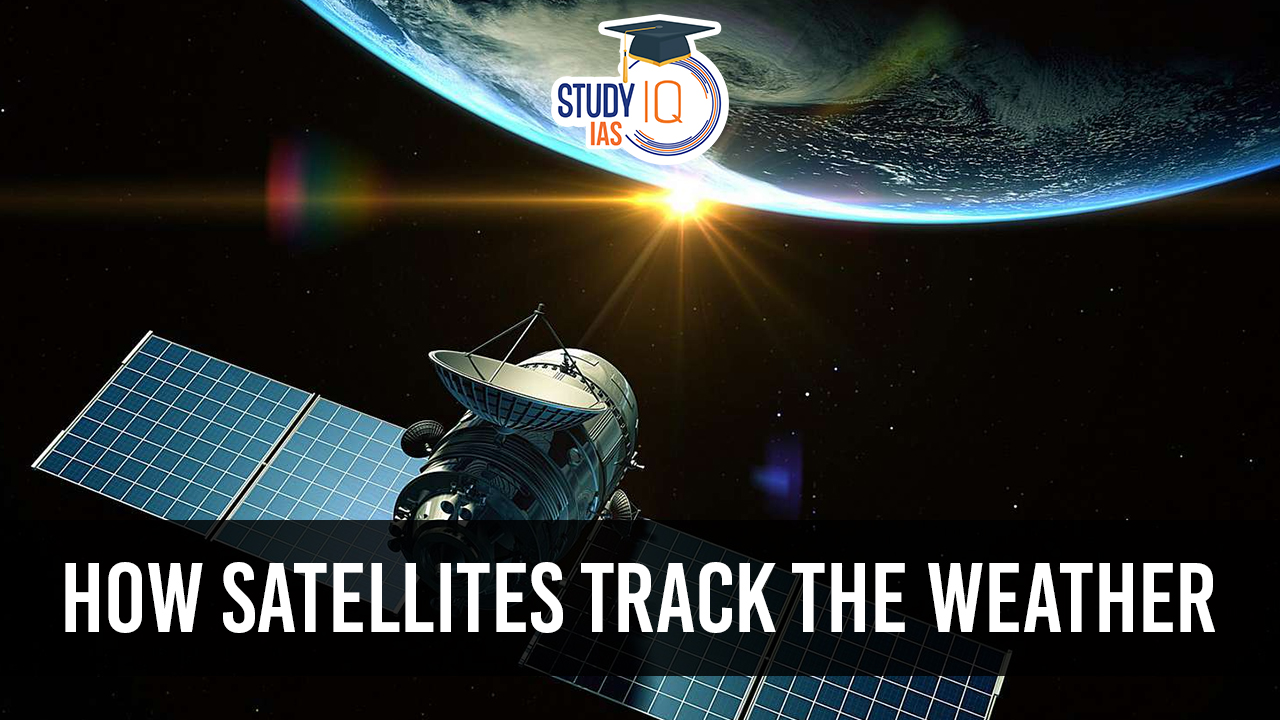Table of Contents
Context: The article highlights how India’s INSAT satellites (like 3D and 3DR) empower weather forecasts. They wield various wavelengths to dissect clouds, snow, and other weather events.
How INSAT (Indian Satellite) System Helps In Weather Analysis?
- Sophisticated Imaging Technology: INSAT satellites such as 3D and 3DR are equipped with RGB imagers, which play a crucial role in identifying various meteorological phenomena. They do this by analysing solar reflectance and brightness temperature across different wavelengths.
- Geostationary Orbit Positioning: Positioned in geostationary orbits, INSAT 3D and 3DR consistently cover the Indian region, providing vital, continuous weather monitoring.
- Round-the-Clock Weather Tracking: These satellites feature ‘day microphysics’ and ‘night microphysics’ capabilities, enabling them to track weather changes throughout the day and night for more thorough surveillance.
- Distinguishing Snow and Clouds: INSAT satellites are adept at differentiating between snow and clouds based on their specific spectral reflectance, which is key for precise weather forecasting.
- Improved Weather Forecasting Accuracy: Utilising both daytime and nighttime data, these satellites aid in better tracking of cyclones and thunderstorms, thereby improving early warning systems.
- Enhanced Radiometer Features: Newer satellites like INSAT 3DR are equipped with upgraded radiometers, offering higher spatial resolution and better functionality than earlier versions like Kalpana 1 and INSAT 3A.
- Detailed Atmospheric Analysis: The atmospheric sounders on these satellites measure temperature, humidity, and water vapour levels, providing comprehensive atmospheric profiles crucial for weather analysis.
- Technological Advancements in New Satellites: Each new satellite in the INSAT series, including INSAT 3DR, comes with advanced features like an improved VHRR, sounder, and additional transponders, continually enhancing India’s weather monitoring capabilities.
We’re now on WhatsApp. Click to Join
How Satellites Determine Colour And Snow?
- Colour Composition: Satellites such as INSAT 3D utilise RGB (Red-Green-Blue) imaging technology. The hues in the images are derived from solar reflectance and brightness temperature. The intensity of visible, shortwave infrared, and thermal infrared signals respectively influence the levels of green, red, and blue in the imagery.
- Snow Identification: Snow exhibits a distinct spectral response. While it reflects light in the visible range like clouds, it strongly absorbs shortwave infrared radiation. This absorption diminishes the red element in the RGB imagery, enabling the satellites to distinguish snow cover from cloud formations.
India’s Weather Satellite
- Kalpana 1: Launched in 2002 and placed in geostationary orbit, Kalpana 1 was equipped with an early version of the Very High-Resolution Radiometer (VHRR) and a data-relay transponder. It was operational until September 2017, serving for 15 years.
- INSAT 3A: Deployed in 2003, INSAT 3A featured a three-channel VHRR for meteorological data collection, with different resolutions for the visible, thermal infrared, and water vapour spectral bands.
- INSAT 3D and 3DR: These satellites, positioned in geostationary orbits at 82 degrees and 74 degrees east longitudes respectively, boast enhanced VHRRs for better spatial resolution and functionality. They are also fitted with atmospheric sounders to measure temperature, humidity, and water vapour levels.
- Planned Launch of INSAT 3DS: Set for a February 2024 launch by the Indian Space Research Organisation (ISRO) using the GSLV Mk II launch vehicle, INSAT 3DS is the latest in the series, signified by its name “3D second repeat”, indicating its role as a follow-up to the INSAT 3D and 3DR missions.


 India to Host First Global Conference on...
India to Host First Global Conference on...
 How Terror Networks Abuse Digital Tools
How Terror Networks Abuse Digital Tools
 United Nations Population Award 2025: Va...
United Nations Population Award 2025: Va...





















